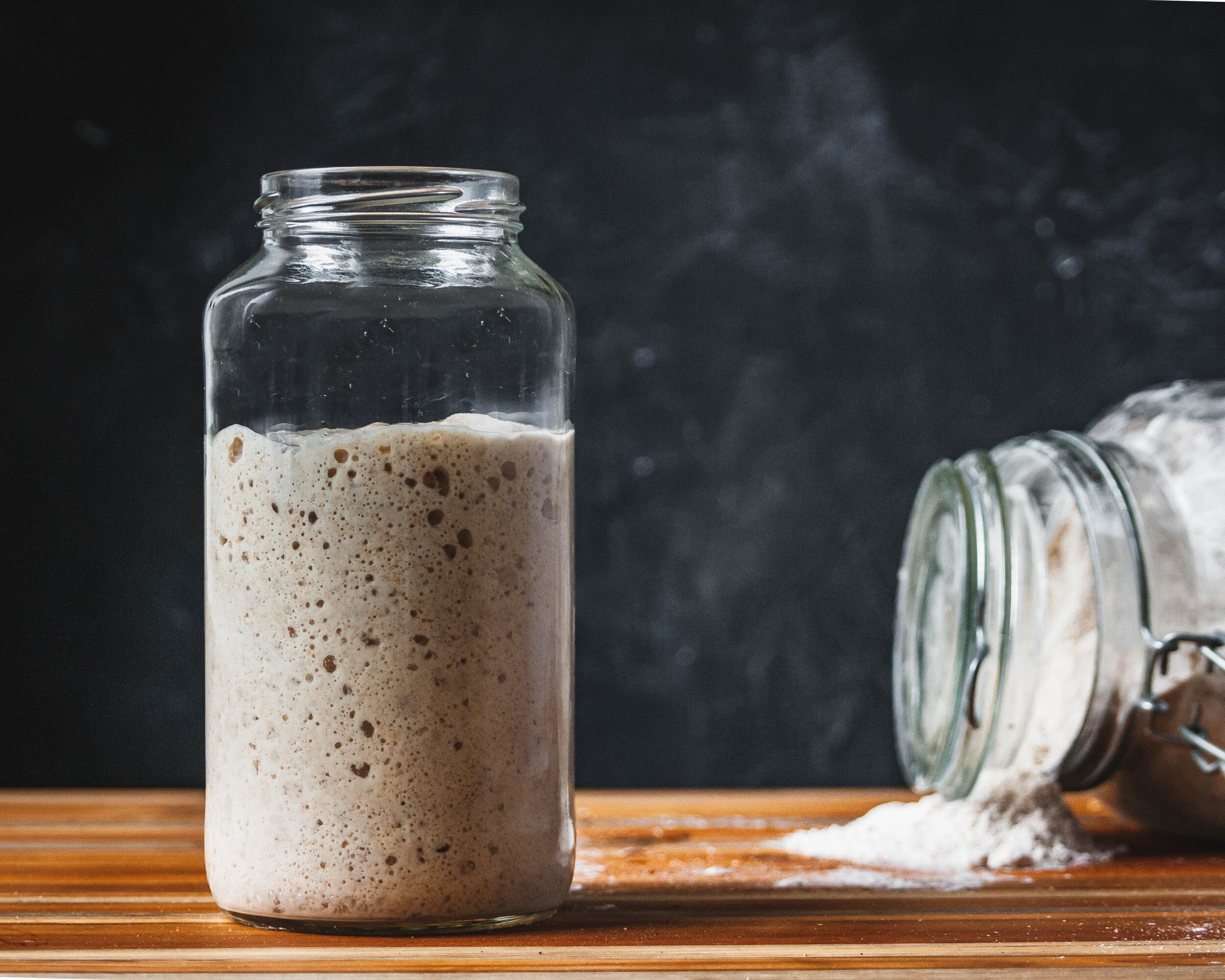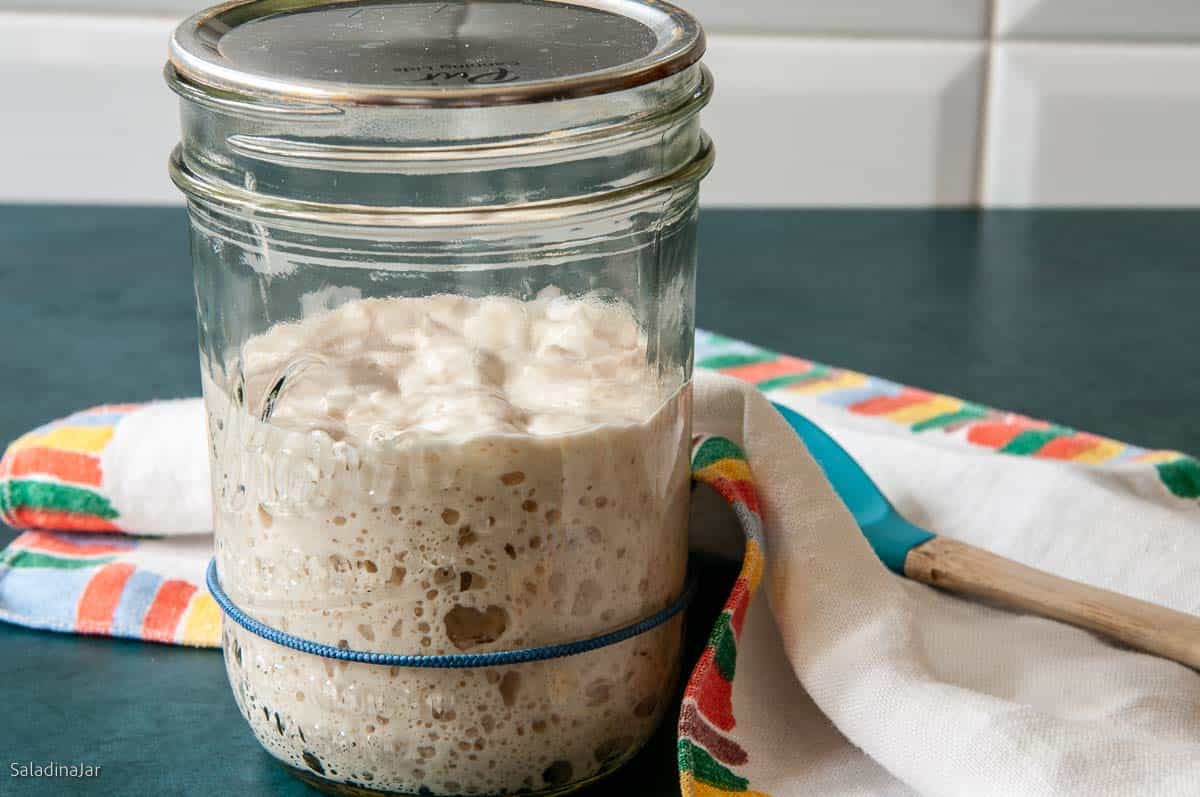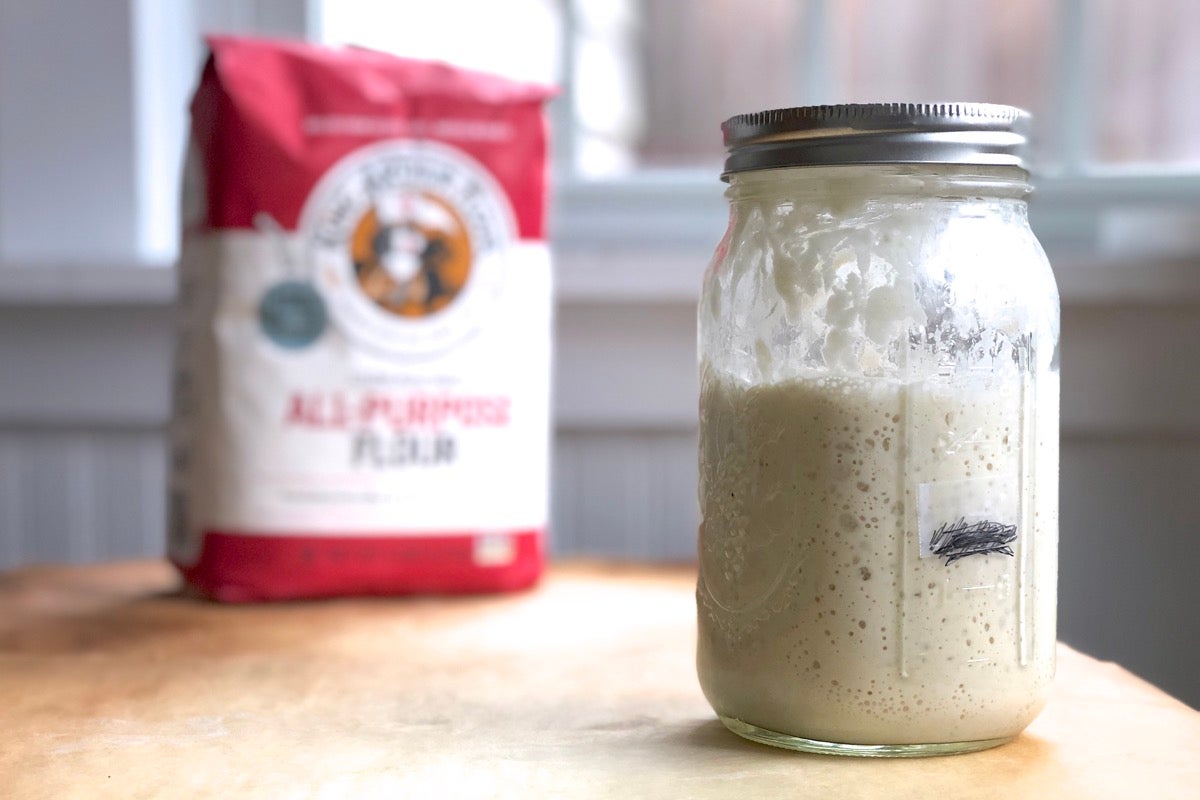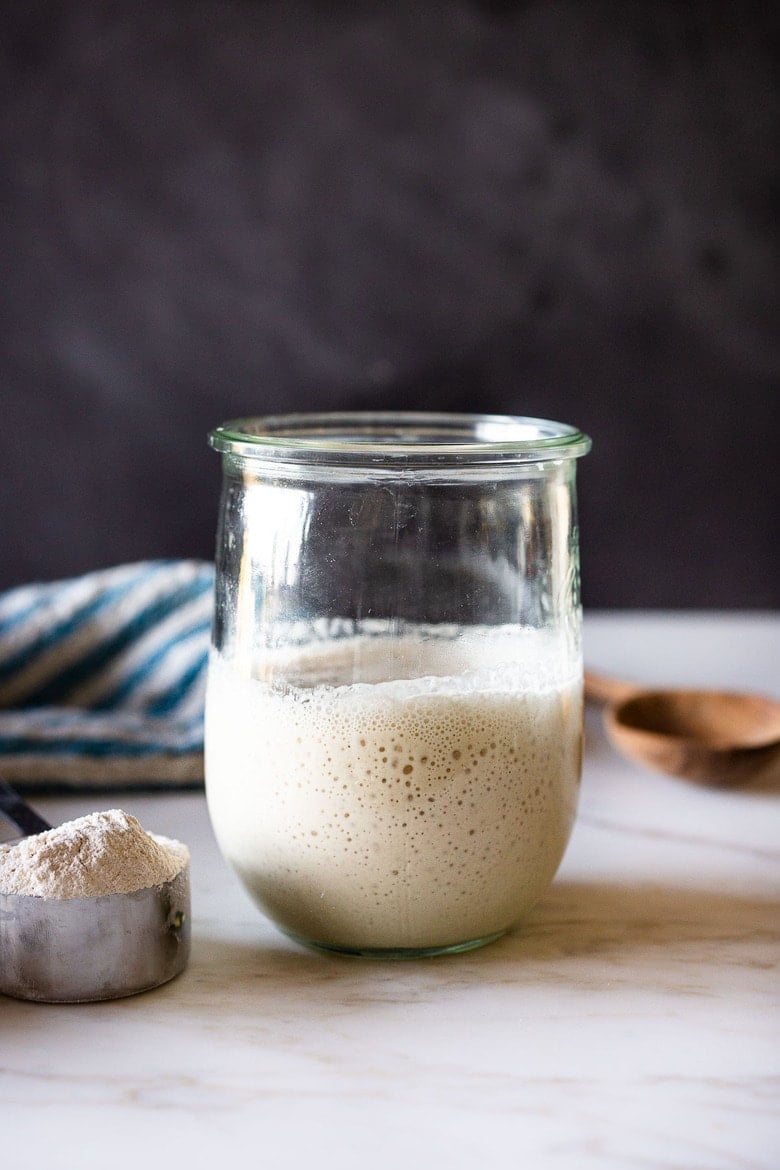Add 1 scant cup (113g) flour and 1/2 cup (113g) lukewarm water to the 1/2 cup (113g) starter in the bowl. Mix until smooth and cover. Allow the starter to rest at room temperature (about 70°F) for at least 2 hours; this gives the yeast a chance to warm up and get feeding. After about 2 hours, replace the starter in its storage container and
Easy Sourdough Starter Recipe Using Yogurt Whey
The reason for this is that hopefully our starter is getting more active so we are going to give it more food to get through the day. More food will also attract more yeast and bacteria. Keep 25 grams of starter and add 75 grams of whole wheat flour and 75 grams of water at 85-90 degrees F (29-32 degrees C).

Source Image: siamesesourdough.com
Download Image
5. Let your starter sit at room temp for 2-4 hours after feeding and before you transfer it back to its (clean) container in the fridge. Sourdough starter and bread dough are similar in a lot of ways. Warmer temperatures make the yeast more active, and cooler temperatures slow them down.

Source Image: pantrymama.com
Download Image
Maintaining your sourdough starter | King Arthur Baking Discard the extra starter (see note) 4 oz unfed sourdough starter. Add the flour and water and mix until combined. Set aside at room temperature. 4 oz all purpose flour, 4 oz water. The starter is ready to use when it has doubled in volume and a small spoonful floats when dropped into a bowl of water.

Source Image: truesourdough.com
Download Image
How Long After Feeding Starter Can I Make Dough
Discard the extra starter (see note) 4 oz unfed sourdough starter. Add the flour and water and mix until combined. Set aside at room temperature. 4 oz all purpose flour, 4 oz water. The starter is ready to use when it has doubled in volume and a small spoonful floats when dropped into a bowl of water. For example, if you want to bake bread on Tuesday morning, give the starter the first feeding at 9 a.m. on Monday and give it the second feeding between 3 and 5 p.m. on Monday. Six to 8 hours
When to Use Sourdough Starter at its Peak to Bake Good Bread – Truesourdough.com
The most common feeding ratio is 1:1:1 (sourdough starter: flour: water). This is also known as a 100% hydration starter. For example, let’s say you have 40 g of sourdough starter in a jar. To feed it, you’ll add 40 g of flour + 40 g of water. This is referred to feeding with “equal parts by weight.”. Everything You Need to Know About Sourdough Starter — Bread & Basil

Source Image: breadandbasil.nyc
Download Image
How to Use the Sourdough Home | Brod & Taylor The most common feeding ratio is 1:1:1 (sourdough starter: flour: water). This is also known as a 100% hydration starter. For example, let’s say you have 40 g of sourdough starter in a jar. To feed it, you’ll add 40 g of flour + 40 g of water. This is referred to feeding with “equal parts by weight.”.

Source Image: brodandtaylor.com
Download Image
Easy Sourdough Starter Recipe Using Yogurt Whey Add 1 scant cup (113g) flour and 1/2 cup (113g) lukewarm water to the 1/2 cup (113g) starter in the bowl. Mix until smooth and cover. Allow the starter to rest at room temperature (about 70°F) for at least 2 hours; this gives the yeast a chance to warm up and get feeding. After about 2 hours, replace the starter in its storage container and

Source Image: saladinajar.com
Download Image
Maintaining your sourdough starter | King Arthur Baking 5. Let your starter sit at room temp for 2-4 hours after feeding and before you transfer it back to its (clean) container in the fridge. Sourdough starter and bread dough are similar in a lot of ways. Warmer temperatures make the yeast more active, and cooler temperatures slow them down.

Source Image: kingarthurbaking.com
Download Image
Simple Sourdough Starter (Video) | Feasting At Home Drop a spoonful of it in a glass of water. If it floats, you’re ready! If it doesn’t float after 24 hours, add more flour and water (equal parts), stir again, and wait. If you aren’t seeing any action after another 12 hours, discard most of it, and add more flour and water (equal parts), stir, and wait.

Source Image: feastingathome.com
Download Image
Sourdough Starter Recipe | Simple Easy Sourdough Starter Step by Step | Recipe | Sourdough starter recipe, Sourdough starter, Starters recipes Discard the extra starter (see note) 4 oz unfed sourdough starter. Add the flour and water and mix until combined. Set aside at room temperature. 4 oz all purpose flour, 4 oz water. The starter is ready to use when it has doubled in volume and a small spoonful floats when dropped into a bowl of water.

Source Image: pinterest.com
Download Image
BASIC SOURDOUGH STARTER GUIDE – ful-filled For example, if you want to bake bread on Tuesday morning, give the starter the first feeding at 9 a.m. on Monday and give it the second feeding between 3 and 5 p.m. on Monday. Six to 8 hours

Source Image: ful-filled.com
Download Image
How to Use the Sourdough Home | Brod & Taylor
BASIC SOURDOUGH STARTER GUIDE – ful-filled The reason for this is that hopefully our starter is getting more active so we are going to give it more food to get through the day. More food will also attract more yeast and bacteria. Keep 25 grams of starter and add 75 grams of whole wheat flour and 75 grams of water at 85-90 degrees F (29-32 degrees C).
Maintaining your sourdough starter | King Arthur Baking Sourdough Starter Recipe | Simple Easy Sourdough Starter Step by Step | Recipe | Sourdough starter recipe, Sourdough starter, Starters recipes Drop a spoonful of it in a glass of water. If it floats, you’re ready! If it doesn’t float after 24 hours, add more flour and water (equal parts), stir again, and wait. If you aren’t seeing any action after another 12 hours, discard most of it, and add more flour and water (equal parts), stir, and wait.